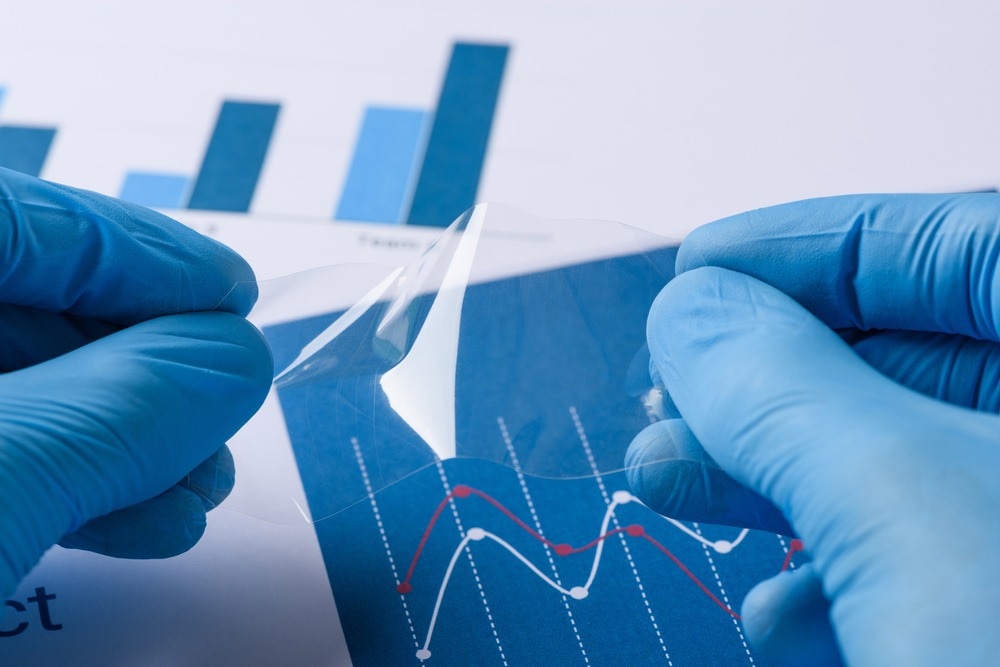A study published in Micro discusses white light reflectance spectroscopy as an optical methodology for the fast, accurate, and non-destructive measurement of films for microelectronics, bio-analysis, photonics and packaging applications.

Study: Non-Destructive Characterization of Selected Types of Films and Other Layers via White Light Reflectance Spectroscopy (WLRS). Image Credit: nevodka/Shutterstock.com
Significance of Film Coating
Film coatings are already vital to our daily lives, and their influence on emerging products and technologies will likely grow. Therefore, it is crucial to mass-produce these films at an affordable price while controlling their unique properties.
Each film's chemical and physical properties define its characterization and application area. Several approaches for characterizing the properties of films are currently developed and commercially accessible.
Thickness is one of the fundamental properties of any film, ranging from millimeter to nanometer scale. It can change with time due to biomolecular interactions, dissolution and glass transition of films.
The thickness of a film typically has a significant impact on its characteristics. For example, coating-substrate interfaces can be impacted by variations in film structure as film thickness increases or decreases.
Therefore, it is crucial to employ techniques that can measure film thickness in a non-contact and non-destructive manner and provide precise results quickly.
Film's Thickness Measuring Technologies
Film thickness can be measured with technologies such as X-ray Reflectance (XRR), stylus profilometry, ellipsometry, white light reflectance spectroscopy (WLRS) and white light interferometry (WLI). These techniques are adaptable to a wide variety of substrates and thicknesses.
Among them, the optical techniques (ellipsometry and white light reflectance spectroscopy) stand out due to their apparent benefits; non-destructive characterization and high resolution. In certain instances, it is also possible to calculate film dissolution and the film's refractive index with optical technologies.
What is White Light Reflectance Spectroscopy?
White light reflectance spectroscopy is based on the reflection of the sample under consideration with a broadband light beam, high-resolution spectroscopic analysis of the reflected light and further fitting using suitable models and fast algorithms.
The light reflected off the substrate's surface with the sample film will have at least one interference fringe in the visible spectrum. Moreover, white light reflectance spectroscopy employs a silicon substrate, with/without graphene sheet disposition, as the reflection medium. Due to these reasons, WLRS is preferable in today's mainstream microelectronic applications that measure the thickness of films or surface coatings.
In addition, the white light reflectance spectroscopy approach can be used for real-time monitoring of multi-layer samples without replacing optical components, reducing the setup's additional cost and complexity.
Using White Light Reflectance Spectroscopy to Measure Film Thickness
The measuring system comprises three major components: a light source, a reflection probe, and a spectrometer. The light source is linked to the reflection probe, positioned above the analyzed material and illuminated at 90°.
Due to the various refractive indices, a portion of the light that falls on the air-sample interface is reflected, while the remainder propagates in the sample being characterized; the same occurs when the light reaches the substrate-film interface. Partially transparent and ultra-thick films absorb the light that passes through them.
A considerable portion of the light reflected from the substrate-film contact reaches the air-film interface and is transferred to the air. The reflection probe's opposite end collects all the reflected light and sends it to the spectrometer for examination.
Important Findings of the Study
White light reflectance spectroscopy is an accurate, fast, cost-effective, and non-destructive method for characterizing thick and thin films in static and dynamic settings. It can measure film thicknesses ranging from 1 nm to 1 mm.
The measuring setup is compact, user-friendly, and gives a small spot size. White light reflectance spectroscopy can characterize ultra-thick and ultra-thin films, transparent films and substrates, and multi-layer composite films. In addition, it accurately characterizes ultra-thin dielectric layers produced on smooth semi-transparent surfaces.
In multi-layers with different optical properties, the white light reflectance spectroscopy methodology can simultaneously measure the individual thicknesses of the adjacent layers.
The white light reflectance spectroscopy technique simultaneously measures film thickness and refractive index. For such measurements, the substrate and film must be smooth, and the film thickness must be adequate. The refractive index dispersion of the films is determined using appropriate refractive index models.
White light reflectance spectroscopy is an effective tool for real-time monitoring of biomolecular interactions. In addition, its label-free detection is very appealing in bioanalytical applications.
Reference
Goustouridis, D., Raptis, I., Mpatzaka, T., Fournari, S., Zisis, G., Petrou, P., & Beltsios, K.G. (2022). Non-Destructive Characterization of Selected Types of Films and Other Layers via White Light Reflectance Spectroscopy (WLRS). Micro. https://www.mdpi.com/2673-8023/2/3/31/htm
Disclaimer: The views expressed here are those of the author expressed in their private capacity and do not necessarily represent the views of AZoM.com Limited T/A AZoNetwork the owner and operator of this website. This disclaimer forms part of the Terms and conditions of use of this website.